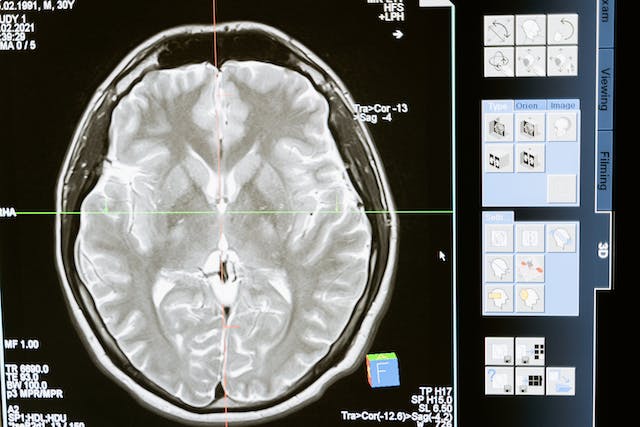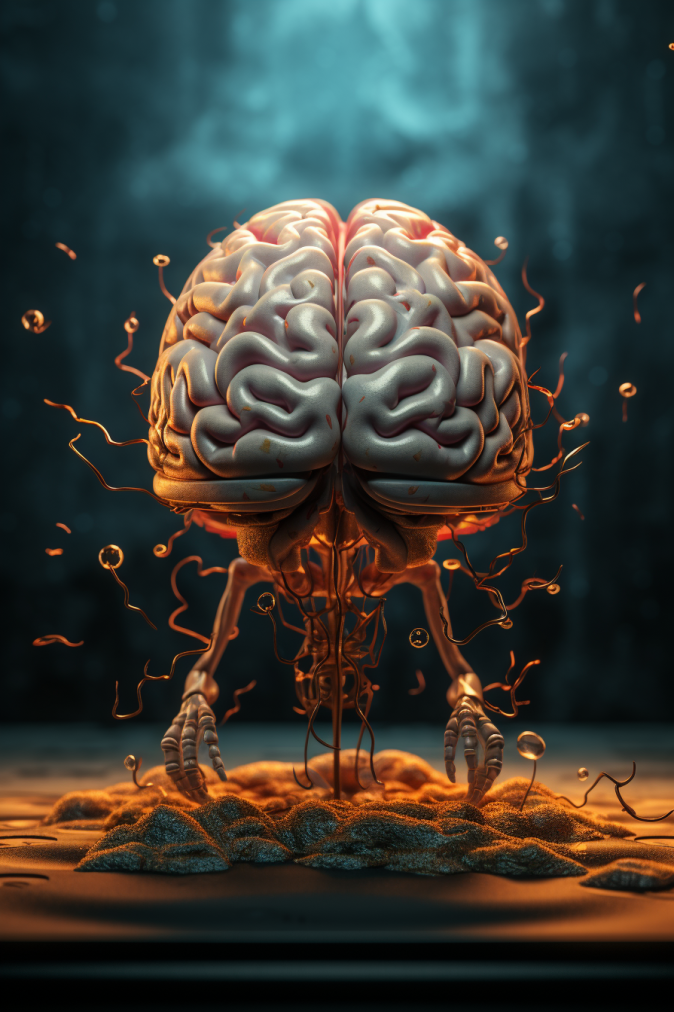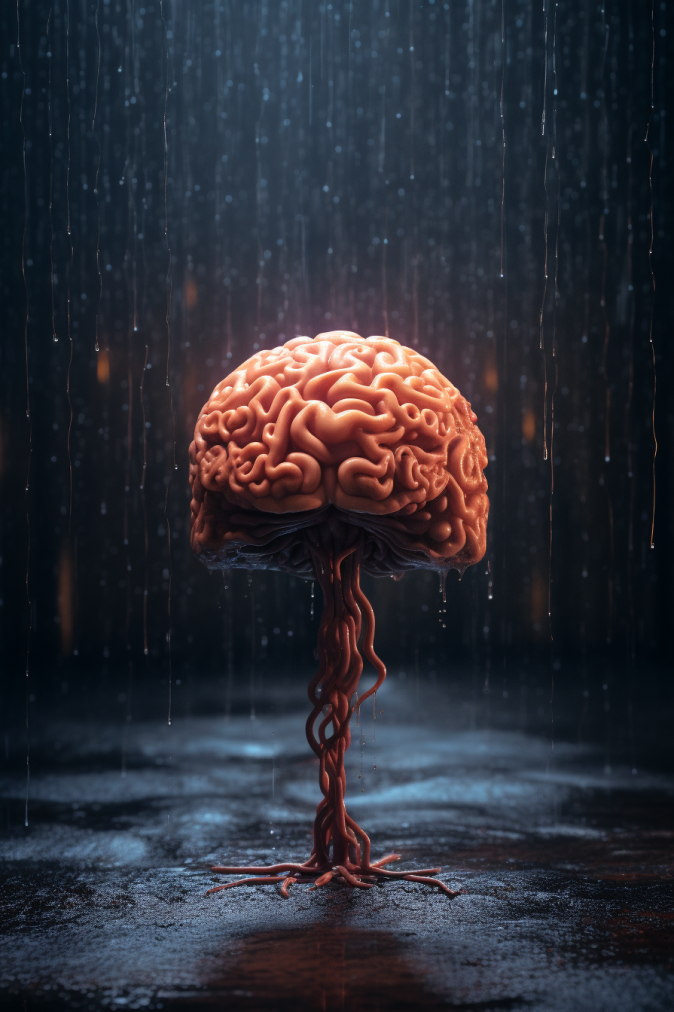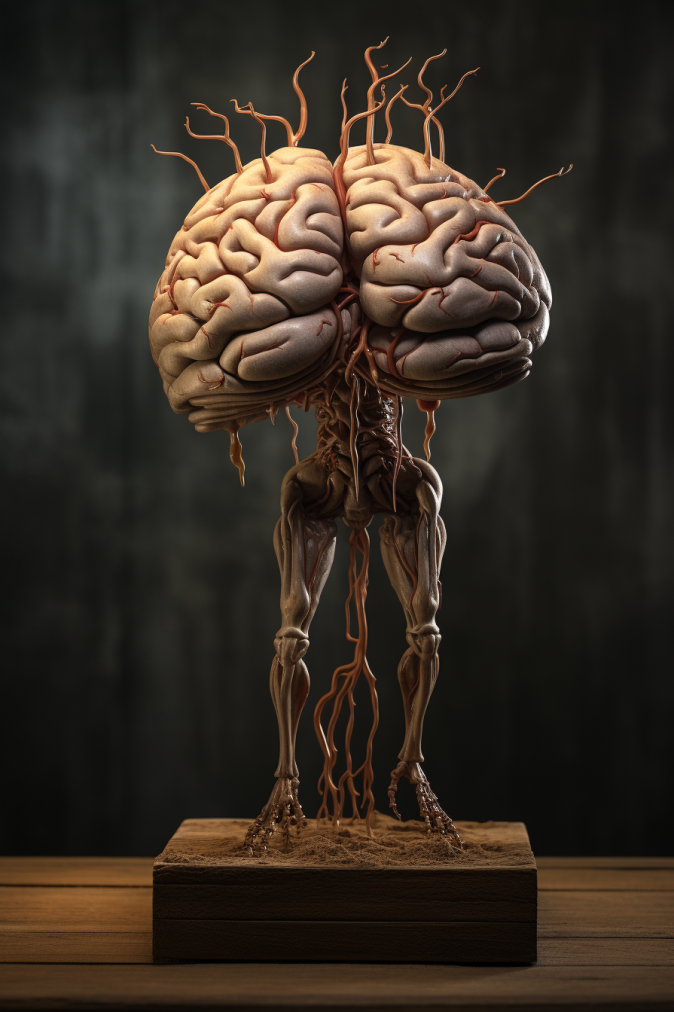
The midbrain plays a crucial role in the brain, serving as a vital connection point between major brain regions.
Positioned beneath the cerebral cortex and at the top of the brainstem, this relatively small region facilitates communication among various brain areas.
In this discussion, we will delve into the midbrain’s anatomy and functions, exploring the repercussions of potential damage to this essential neural hub.
What is the midbrain?
The midbrain, scientifically termed the mesencephalon, stands as the uppermost segment of the brainstem, serving as the crucial link connecting the brain and the spinal cord.
Despite being the smallest section of the brainstem, measuring a modest 2cm in length, its significance in neurological functions is substantial.
Within the midbrain, three primary components exist, each playing a distinctive role: the colliculi, the tegmentum, and the cerebral peduncles.
These elements collectively contribute to the intricate functions housed within this cerebral region.
- Read also: Unraveling the Dopamine Function in The Brain
- Read also: 5 Tips on How to Improve Brain Function
Several different structures of the midbrain

The midbrain, a pivotal region in the brainstem, exhibits a complex organization with distinct structures, each playing a specialized role in neurological functions.
This intricate division includes the tectum (posterior), tegmentum, and cerebral peduncles (anterior).
Tectum
Starting with the tectum, positioned at the posterior part of the midbrain, it houses two pairs of prominent bundles of neurons known as the superior and inferior colliculi.
The superior colliculi engage in the initial processing of visual signals, contributing to the early stages of visual perception.
These processed signals then move forward, making their way to the thalamus, a critical relay station in the brain.
On the other hand, the inferior colliculi focus on the preliminary processing of auditory signals, refining them before transmitting them to the cortex through the thalamus.
This dual functionality underscores the tectum’s crucial role in shaping our visual and auditory experiences.
Tegmentum
Venturing into the tegmentum, the midbrain’s ventral portion, reveals a diverse array of structures.
Within this region, one finds the cranial part of the reticular formation, a network of nuclei that regulates essential bodily functions.
Additionally, cranial nerve nuclei, responsible for controlling eye movements, reside here, emphasizing the tegmentum’s involvement in visual coordination.
The periaqueductal gray (PAG) matter, red nucleus, substantia nigra, and ventral tegmental area (VTA) further contribute to the tegmentum’s multifaceted responsibilities.
The periaqueductal gray is associated with pain modulation, the red nucleus plays a role in motor control, the substantia nigra is crucial for reward and movement, and the ventral tegmental area is linked to the brain’s reward system and motivation.
Cerebral peduncles
The cerebral peduncles, positioned at the anterior part of the midbrain, serve as the primary conduits for signals traveling from the brain to the spinal cord.
Functioning as the main highway for these transmissions, the cerebral peduncles are particularly vital for body coordination.
They ensure the smooth and efficient relay of signals, facilitating coordinated movements and responses throughout the body.
What is the main function of the midbrain?

The midbrain, or mesencephalon, stands as a multifaceted powerhouse within the brain, undertaking a spectrum of critical functions that collectively contribute to the seamless orchestration of our physiological and sensory experiences.
Motor function
Among its diverse roles, the midbrain holds a significant responsibility for motor function.
It actively participates in coordinating voluntary movements, ensuring the smooth execution of motor commands throughout the body.
This involvement in motor control underscores its pivotal role in facilitating our ability to move and interact with the environment.
Sensory information processing
A key function of the midbrain lies in the reception and integration of sensory information, with a pronounced focus on visual and auditory input.
The midbrain acts as a central hub for processing these sensory signals, playing a crucial role in shaping our perception of the surrounding world.
Through the reception and integration of visual and auditory stimuli, the midbrain contributes to our ability to navigate and respond to our environment effectively.
Relay system for vision and hearing
Functioning as a relay system, the midbrain serves as a vital intermediary in the transmission of information crucial for vision and hearing.
It acts as a conduit for visual and auditory signals, ensuring that these sensory inputs are appropriately relayed to higher brain centers for further processing.
This relay system is fundamental to the construction of our conscious sensory experiences.
Regulation of physiological processes
The midbrain extends its influence beyond sensory and motor functions, actively participating in the regulation of essential physiological processes.
It plays a pivotal role in the maintenance of body temperature, blood pressure, and breathing.
This regulatory function highlights the midbrain’s involvement in maintaining homeostasis, a delicate balance essential for the overall well-being of the organism.
Involvement in the sleep/wake cycle
The midbrain also contributes to the intricate regulation of the sleep/wake cycle, a fundamental aspect of our circadian rhythm.
Through its involvement in coordinating arousal and sleep patterns, the midbrain helps synchronize our daily cycles, influencing our overall patterns of wakefulness and rest.
Channel for sensory transmission
Beyond its integrative functions, the midbrain serves as a crucial channel for the transmission of sensory stimuli from the spinal cord to the brain.
This channel ensures the effective communication of sensory information from various parts of the body, enabling rapid and coordinated responses to external stimuli.
What happens if the midbrain is damaged?

When the midbrain, the intricate hub of neurological functions, undergoes damage, the repercussions extend across a spectrum of vital processes, impacting movement, sensory perception, memory, and automatic bodily functions.
Movement disorders
One prominent outcome of midbrain damage manifests in the form of movement disorders.
The midbrain, integral to motor coordination, may exhibit compromised functionality, leading to disruptions in the seamless execution of voluntary movements.
Patients may experience difficulties in initiating and controlling movements, impacting their overall motor skills and coordination.
Impaired vision and hearing
Given the midbrain’s pivotal role in processing visual and auditory signals, damage to this region can result in significant impairments in vision and hearing.
Visual disturbances and challenges in auditory perception may arise, affecting the individual’s ability to interpret and respond to stimuli from the environment.
Memory challenges
Midbrain damage has been associated with difficulties in memory.
The intricate interplay between the midbrain and memory processes implicates this region in the encoding and retrieval of information.
Consequently, individuals with midbrain damage may encounter challenges in forming new memories or recalling existing ones.
Impact on automatic body functions
The midbrain houses the hypothalamus, a key player in regulating automatic bodily functions.
Damage to the midbrain can disrupt this regulatory role, leading to alterations in vital processes such as body temperature, blood pressure, and breathing.
The autonomic functions, typically managed seamlessly by the midbrain, may face disruptions, resulting in a range of physiological challenges.
- Read also: Brain Stem Damage – Detailed Overview
- Read also: Understanding Brain Chemistry
Conclusion
In essence, the midbrain emerges not only as a connection point but as a linchpin in the delicate dance of neural functions.
Its size belies its importance, as it stands sentinel, ensuring the harmonious interplay of information within the vast neural network.
The consequences of midbrain damage serve as a poignant reminder of its indispensability, prompting a deeper appreciation for the intricate machinery that governs our cognitive and sensory realms.



